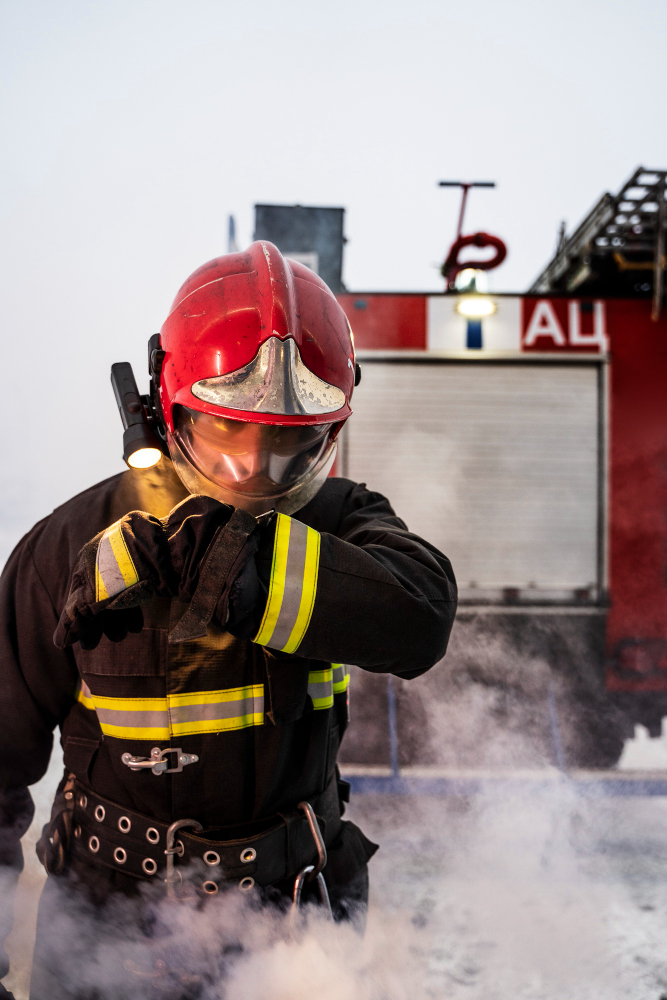In the event of a fire emergency, having the right tools can make all the difference between containment and catastrophe. Among the most critical tools for fire safety is the humble yet indispensable fire extinguisher. In this blog, we delve into the importance of fire extinguisher, their types, usage, maintenance, and why they are a non-negotiable component of any safety plan.
Empowerment Through Training:
Proper training empowers individuals to respond effectively to fire emergencies, enhancing overall safety and preparedness. Fire extinguisher training programs teach participants how to identify different types of fires, select the appropriate extinguisher, and use it correctly in accordance with safety protocols. By equipping employees, residents, or community members with the knowledge and skills to respond confidently to fires, organizations can foster a culture of safety and resilience. Training sessions should be conducted regularly to reinforce learning and address any updates or changes in procedures.
Types of Fire Extinguishers
Fire extinguishers are classified based on the type of fire they are designed to combat. The most common types include:
- Water Extinguishers (Class A):
- Suitable for fires involving ordinary combustible materials such as wood, paper, and cloth. Water extinguishers work by cooling the fire and reducing its temperature to the point where it can no longer sustain combustion.
- Dry Chemical Extinguishers (Class ABC):
- Effective against fires fueled by combustible materials (Class A), flammable liquids (Class B), and energized electrical equipment (Class C). Dry chemical extinguishers smother the fire by coating the fuel with a layer of fine powder, interrupting the chemical reaction.
- Carbon Dioxide (CO2) Extinguishers (Class BC):
- Designed for fires involving flammable liquids (Class B) and energized electrical equipment (Class C). CO2 extinguishers work by displacing oxygen, effectively suffocating the fire and suppressing its combustion.
- Foam Extinguishers (Class AB):
- Suitable for fires fueled by combustible materials (Class A) and flammable liquids (Class B). Foam extinguishers create a blanket of foam that seals off the fire’s oxygen supply, smothering the flames and preventing reignition.
- Wet Chemical Extinguishers (Class K):
- Specifically designed for fires involving cooking oils and fats typically found in commercial kitchens. Wet chemical extinguishers contain a special agent that reacts with the burning oil, creating a cooling effect and forming a layer that prevents re-ignition.
Proper Usage
Using a fire extinguisher effectively requires knowledge and proper technique. Remember the acronym “PASS”:
- Pull: Pull the pin to break the seal and unlock the operating lever.
- Aim: Aim the nozzle or hose at the base of the fire, not the flames themselves.
- Squeeze: Squeeze the handle to discharge the extinguishing agent.
- Sweep: Sweep the nozzle or hose from side to side, covering the entire base of the fire with the extinguishing agent.
Maintenance and Inspection
Regular maintenance and inspection are crucial to ensure that fire extinguishers remain in optimal working condition. Here are some key maintenance tasks:
- Visual Inspection: Check the extinguisher for visible signs of damage, corrosion, or leakage.
- Pressure Gauge Check: Ensure that the pressure gauge indicates the extinguisher is fully charged.
- Seal and Safety Pin Inspection: Verify that the safety pin is intact and the tamper seal is unbroken.
- Extinguishing Agent Shake: Periodically shake dry chemical extinguishers to prevent the powder from settling and compacting.
The Importance of Fire Extinguishers
Imagine a scenario where a small spark ignites in your kitchen or office space. Without a fire extinguisher readily available, that spark can quickly grow into a raging inferno, endangering everyone in its vicinity and causing irreversible damage. However, with a properly maintained fire extinguisher within reach, you have the means to swiftly contain and extinguish the fire before it spirals out of control.
Fire extinguishers serve as the first line of defense against fires, allowing individuals to intervene in the early stages of a blaze. Whether it’s a minor cooking mishap, an electrical malfunction, or a chemical spill, having a fire extinguisher nearby provides a sense of security and empowerment, enabling swift action to mitigate the threat.
Compliance with Regulations and Standards:
Regulatory agencies and building codes often mandate the presence of fire extinguishers in certain environments to ensure compliance with safety standards. Businesses, educational institutions, healthcare facilities, and other public spaces are typically required to maintain a sufficient number of extinguishers based on the size and occupancy of the premises. Failure to adhere to these regulations not only jeopardizes the safety of occupants but also exposes property owners to potential legal liabilities. Regular inspections and adherence to relevant standards are essential for compliance and risk mitigation.
Proper Usage and Maintenance
While having fire extinguishers readily available is crucial, knowing how to use them correctly is equally important. Familiarizing yourself with the PASS technique—Pull, Aim, Squeeze, Sweep—can empower you to act decisively in the event of a fire:
- Pull: Pull the pin to break the tamper seal and prepare the extinguisher for use.
- Aim: Aim the nozzle or hose at the base of the flames, not at the tops of the fire.
- Squeeze: Squeeze the handle to discharge the extinguishing agent.
- Sweep: Sweep the nozzle or hose from side to side, covering the base of the fire with the extinguishing agent until the flames are fully extinguished.
Regular maintenance and inspections are also essential to ensure that fire extinguishers remain in optimal working condition. Periodic checks should include verifying the pressure gauge, inspecting for visible damage or corrosion, and ensuring that the nozzle or hose is unobstructed. Additionally, rechargeable extinguishers should be serviced according to manufacturer recommendations to replenish the extinguishing agent and maintain operational readiness.
Rapid Response Saves Lives:
Time is of the essence when it comes to fire emergencies. A small fire can double in size within seconds, and every moment counts in containing the blaze. Fire extinguishers provide an immediate response capability, allowing individuals to intervene swiftly and prevent the fire from spreading. By having extinguishers strategically placed throughout a building or facility, occupants can effectively address fires before they escalate, minimizing the risk of injury or loss of life.
Conclusion
Fire extinguishers are a vital component of any fire safety plan, providing a quick and effective means of suppressing small fires before they escalate. Understanding the different types of fire extinguishers, their proper usage, and the importance of regular maintenance is essential for ensuring their effectiveness in an emergency. By equipping yourself and your workplace with the right fire extinguishers and the knowledge to use them, you can help prevent fires from turning into disasters and protect lives and property.





